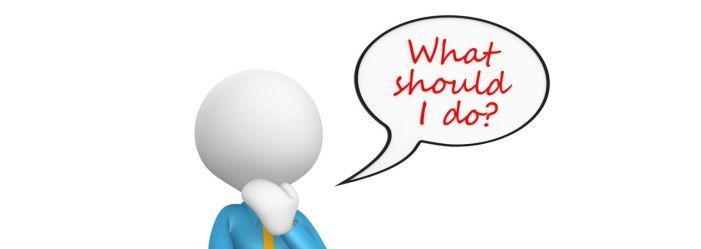Last Updated: January 03, 2024
What Should Be The First Thing To Do?

If you want to cut some items out of your budget, what should be the first things to go? Check out this list of items to cut from your budget in order to get your spending under control and have cash left over to pay bills and even save a bit for the occasional splurge or emergency.
Less Eating Out
Who doesn’t like to go to a restaurant or grab a bite to eat. It saves time. What it won’t save is money (or your calories). The average American in 2019 spent $200 a month on restaurant dining, $175 on delivery or take out, and another $175 on lunches. By not eating out and brown-bagging it at work, you can save roughly $550 a month.
Cook enough for leftovers and freeze them. One big batch of chili or lasagna might feed a family for several days and they make a great dinner when you’re too tired to cook.
If you are talking about savings huge amounts of money, check your alcohol bill. The average bar tab depends on what and where you drink, but $50 to $200 is not uncommon.
Cable and Streaming Services
Cable, music and video streaming, and paid apps just suck money right out of your wallet. The average monthly expenditure on cable is $120, on paid apps is $25, on TV/movie streaming is $25, and music streaming is $20.
Try checking out some free options online instead. The one place you will have a hard time saving is on your internet service. It has proven itself to be a necessity in 2020.
Mobile Phones
The first question to ask is do you need a mobile phone? The answer is probably yes. So then find a cheaper phone plan or carrier. The other issue with cell phones is the marketing drive to upgrade your perfectly good cell phone. As long as your phone works, it’s probably not worth all the bells and whistles.
Subscriptions and Memberships
If you are like most Americans, you probably have a gym membership that never gets used or magazines that you don’t really read. These average almost $100 a month! Cut the cord on the ones you don’t use.
New Clothing and Furniture
Most of us have clothes we never wear or can’t because they have “shrunk in the wash”. Spark some joy by getting rid of the excess – you may even be able to consign it and make a little money. Then, try shopping at consignment shops now and then, you can find some amazing deals!
Most cities have a variety of consignments from high end and boutique to moderate to Goodwill. Buying new furniture is very expensive. Keen your eye out for bargains and replace items sparingly.
Grocery Bills
Impulse shopping and grocery stores go hand in hand. Grocery store layouts are specifically designed to encourage impulse shopping.
Companies pay for premium placement – the shelves at the easiest grabbing or eye-catching level.
The most expensive products are generally displayed on those shelves. Often the larger, cheaper containers will be lower on the shelves. If you will use the entire family-sized container, those can be a great deal.
- Plan meals and then shop your plans
- Realize that generic and store brands are often products at the same factory
- Buy in bulk and on sale when possible
- Use coupons wisely. Just because you have one doesn’t mean you need to use it
Try making your own cleaning products. With a bit of research, you can come up with cheaper products that are as effective and less toxic than what you get off the shelf.
Another place to save is on paper products. Buy cloth dish rags and wash them when they get dirty. You can even create your own rags from worn-out cotton clothing.
Lower Grocery Costs
In addition to meal planning and buying generic brands.
Try these tips:
- Use apps like Ibotta to get cash back on groceries
- Buy in bulk for non-perishables and freeze what you won't use right away
- Have a "no spend day" each week where you eat only what's already in your pantry/fridge
- Grow your own herbs and vegetables to supplement store-bought ingredients
Hair and Nail Care
We all like to look good but unless you are banking on your looks, do you really need to splurge on it? A less maintenance intensive look will be cheaper and more sustainable in the long run.
Learn to do your own hair or nails by watching YouTube videos. You may also find a less expensive place to go that can do every bit as good as a job for far less.
Vehicles
Take a look at all modes of transportation you have. Are there any you can sell? Can your insurance premiums be lowered? Can you use public transportation and skip parking fees, gas, and maintenance on a car? Is a bicycle a valid means of transportation for at least part of the year?
Cars are expensive, so ask yourself if you need the car or if you could do with something different. And do you really need a new car, when a new-to-you car would be perfectly functional? Remember, new cars start to depreciate value the minute you drive off the lot.
Create and Manage a Budget
Take the time to discover where you are spending your money. Track where every penny goes for a month and then eliminate anything you can live without. Setup and live with a budget. If you hate dealing with details, check out the 50/30/20 budget plan. It is a simple way to budget your money by percentage, rather than exact figures.
In a previous article, we discussed having a No Spend Day, Week, and Month. The idea is to not spend any money and see how much you save. You can then adjust your lifestyle to live without those habits that cost you up to $1500 a month! Once you have trimmed your spending, you’ll have money to either pay off debt or save money.
What to Do When There is Nothing Else to Cut
If you have trimmed your budget to the bones, sold everything that could be sold, and are doing without practically everything, but you still can’t make a dent in your bills, you may need more help. The debt professionals at Pacific Debt, Inc will help you to understand all your debt relief options and help you find the best solution for you.
Use Budgeting Tools and Apps
With technology making everything easier, there are now a variety of budgeting apps and tools available to help you track expenses, create budgets, and manage debt.
Popular options include:
- Mint: Connect your bank accounts and credit cards to automatically categorize spending and provide insights into where your money goes each month. Set budgets for each category.
- You Need A Budget (YNAB): Manually enter transactions to build awareness of spending. Emphasizes giving every dollar a "job" in your budget. Offers workshops and education on budgeting principles.
- Personal Capital: Investment and net worth tracking tool that also monitors cash flow and analyzes spending patterns. The free version provides sufficient expense tracking capability.
- Tiller: Syncs transactions from financial accounts and assists with spreadsheets. Useful for those who like to crunch numbers and customize budgets in Excel or Google Sheets.
Consider using one of these tools to gain visibility into where your money is going each month. Automating the tracking process makes it easier to spot areas to cut back.
FAQs
Conclusion
Getting your finances under control and paying down debt takes commitment, but is completely achievable. Start by evaluating your budget, reducing unnecessary expenses, consolidating higher interest debts, and exploring professional guidance on debt relief options.
Our team of experts at Pacific Debt stands ready to offer specialized advice, customized debt management plans, and ongoing support. With persistence and the right help, you can break the debt cycle and reach financial stability. Reach out today to start a free consultation and take the first step toward financial freedom.
For more information, contact one of our
debt specialists today. The initial consultation is free, and our debt experts will explain your options to you.
Reduce Your Credit Card Debt By Up to Half

BBB Reviews | 4.9/5.0 Rating









 Do Not Sell My Personal Information
Do Not Sell My Personal Information